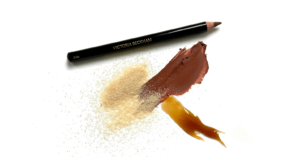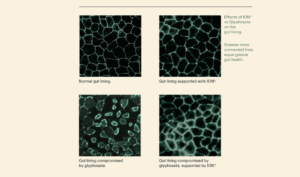The Path Paved in Green
There was a time, only decades ago when Teflon, yes as in the stuff that makes your eggs slide off your pan, could be found in eyeshadows, sunscreens, and even anti-aging creams. Some of these products are still on the market today.
Beginning with when I first transitioned my makeup kit in 2008, through my time at Beautycounter, I’ve been on the front lines of the clean beauty movement and seen first-hand how the beauty industry has changed over the last 15 years. I’m proud to have been a pioneer on the rise of clean beauty—a movement that prioritizes the safety, sustainability, and ethical sourcing of cosmetic products.

My Journey
As a former aesthetician, I was familiar with the toxic chemicals used in traditional skincare products, but it wasn’t until I read Not Just a Pretty Face by Stacy Malkan that I realized these toxic chemicals were not just in skincare but in makeup as well.
When I chose to “clean up” my pro makeup kit, I recognized there was room for improvement in the clean makeup sphere. I began to mix my own concoctions to find the perfect shades and consistencies to apply to the models I was working on. In 2011 I teamed with Gregg Renfrew to help create Beautycounter, while working tirelessly alongside chemists to create high-performing products.
This venture took lots of persistence, tenacity, and passion. Up until this point, there wasn’t a precedent for creating personal care products and cosmetics with superior performance made with clean ingredients. Eventually, I learned that clean beauty products can be just as efficacious and photoshoot-worthy. They’re just as malleable and dimensional as their traditional counterparts without the lasting carbon footprint or threats to our health.
The Origins of Clean Beauty
The idea of using natural ingredients in beauty products isn’t new. Indigenous wisdom is full of techniques for using botanicals in skin and haircare. From the ancient Egyptians who used kohl made from crushed minerals for eyeliner to the Greco-Roman tradition of applying olive oil as an all-purpose beauty and health aide, to certain groups of Native Americans who used juniper tincture as a skin treatment and yuca root to make shampoo, clean beauty has always been a part of our collective history.
As cosmetic science evolved in the 20th century, synthetically produced ingredients became the norm due to their cheaper production costs. Companies were able to produce many varieties of products very quickly but didn’t realize, nor necessarily prioritize, consumer health or the lasting environmental impacts of their products.
Re-Rooting in Beauty
In the mid-2000s, a significant shift towards natural and organic products emerged, fueled by a growing interest among consumers. The expansion of Whole Foods across the country served as undeniable evidence that industries emphasizing consumer health and environmental well-being had a thriving market.
As consumers became increasingly aware of the ingredients in the products they ate, they soon began to question what they were applying on their skin and actively began to seek out healthier alternatives for all their personal care products.
As cosmetic science evolved in the 20th century, synthetically produced ingredients became the norm due to their cheaper production costs. Companies were able to produce many varieties of products very quickly but didn’t realize, nor necessarily prioritize, consumer health or the lasting environmental impacts of their products.
The Impact of Clean Beauty
Today, clean beauty is experiencing unprecedented growth as more brand founders and consumers are prioritizing the safety, sustainability, and ethical sourcing of their personal care products.
Protecting our land and oceans starts with smarter consumer choices. By making informed decisions about the products we use daily, we can create a healthier, more sustainable future for ourselves and our planet.
When you know better, you do better.
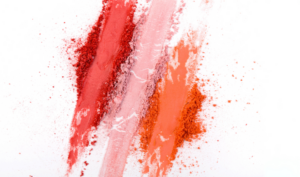
Blush Bliss
Discover the magic of blush, my go-to product for adding a subtle burst of color to everyday makeup looks.
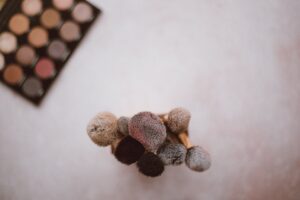
Clean Up the Clutter
Expired makeup can wreak havoc on skin–but it doesn’t have to. Christy shares the when and why behind expired makeup.
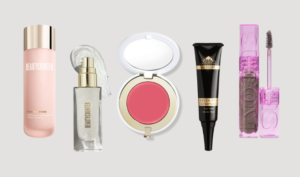
Winter Blues
Winter Blues got you Down? Glow and Brighten your Beauty Routine.

My 2024 Goals and How I Plan to Achieve Them
The new year brings new goals and aspirations. My 2024 includes big plans and an even bigger calendar!

Blush Bliss
Discover the magic of blush, my go-to product for adding a subtle burst of color to everyday makeup looks.

Clean Up the Clutter
Expired makeup can wreak havoc on skin–but it doesn’t have to. Christy shares the when and why behind expired makeup.

Winter Blues
Winter Blues got you Down? Glow and Brighten your Beauty Routine.

My 2024 Goals and How I Plan to Achieve Them
The new year brings new goals and aspirations. My 2024 includes big plans and an even bigger calendar!
CONNECT
Lorem ipsum dolor sit amet, consectetur adipiscing elit. Ut elit tellus, luctus nec ullamcorper mattis, pulvinar dapibus leo. Lorem ipsum dolor sit amet, consectetur adipiscing elit. Ut elit tellus, luctus nec ullamcorper mattis, pulvinar dapibus leo. Lorem ipsum dolor sit amet, consectetur adipiscing elit. Ut elit tellus, luctus nec ullamcorper mattis, pulvinar dapibus leo. Lorem ipsum dolor sit amet, consectetur adipiscing elit. Ut elit tellus, luctus nec ullamcorper mattis, pulvinar dapibus leo. Lorem ipsum dolor sit amet, consectetur adipiscing elit. Ut elit tellus, luctus nec ullamcorper mattis, pulvinar dapibus leo.




